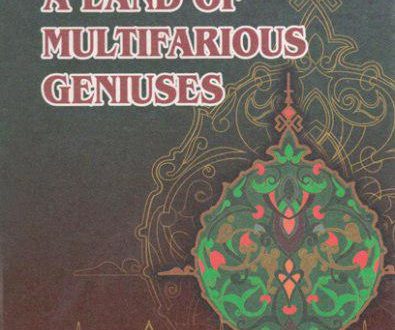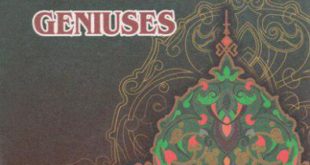The most important scientific works written by Abu Zayd Dabusi are as follows:
- “Taqvimu-l-adilla”. There are four important works of the .uithor devoted to “usul” (style) and “khilaf” (comparative law).
They are:
- “Taqvimu-l-adilla fi usuli-l-fiqh”;
- “Ta’sisu-n-nazar”;
- “Kitabu-l-asrar fi-l-usul va-l-furu”;
- “At-Ta’liqa”.
“Taqvimu-l-adilla” has its own place among the other books. Consisting of 472 pages, it was published by the company “Dar ul-kutubi-l-ilmiya” in Beirut in 2001 under the attentive study of Sheikh Khalil Muhyiddin al-Malis.
In the preface of the book, Khalil al-Malis wrote the following lines: “Among the scholars of the Shafi’iya order, Imam Sam’ani (1113-1167) used this book effectively and created his book “Qavatiu-l-adilla” (Strict Proofs). Following the ideas of Imam Dabusi, he created a special chapter in his book devoted to Imam Dabusi in which he wrote: “Imam Abu Zayd Dabusi’s “Taqvimu-I .ulilla” contains such necessary and important chapters for modern lnwyers that cannot be found in the books created in this field”. In dw second chapter (pp.368-408) the author continues the ideas i iressed by Imam Abu Zayd Dabusi. This fact shows how important, meaningful and fresh were the ideas promoted by Imam Dabusi.
According to the statement mentioned by al-Malis, one of the manuscripts of the book contains an elegy on a margin written by Abu Ali Ibn Sina (Avicenna) on the occasion of Imam Dabusi’s death. The rubai says: “Even if the whole space in the Heavens cried bitterly for the untimely death of Imam Dabusi, it would not be enough consideration before the estimation and appreciation of Imam Dabusi’s service for the humanity”. Written in Arabic language this quatrain may be good evidence how deeply impressed was a famous scholar Abu Ali Ibn Sina (Avicenna) on the death of Imam Dabusi. He was also highly respected and appreciated by other estimated scholars of his time throughout the world as Imam Dabusi’s death was considered to be a great loss for the whole world of the Islamic science. This small but meaningful elegy may be accepted as a proof that Imam Dabusi and Abu Ali Ibn Sina (Avicenna) were conte mporaries and Imam Dabusi had good scientific relations with the scholars and scientists of Ma’mun Academy in Khoresm which was in its developing stage at that time.
A famous lawyer and researcher M. Hamidulla wrote the following lines about “Taqvimu-l-adilla” by Imam Dabusi: “This book which I have just finished reading is the best one among the books devoted to the science, of style in law. In his book Dabusi fully expressed all of his potential in the field of comparative law as a result of which there appeared another precious book on the comparative law”.
According to Brokkelman.this book resembles the books written on the science of “Tawhid” (unity of God) from the point of view of its style. The originality of the book is in the fact that the debates concerning the styles in law are supported by true and perfectly investigated examples taken from the reality of things.
Imam Dabusi was a courageous scholar sure of his scientific potential and, in accord with the requirements of the situation, he dared to comment on the ideas and theories promoted by such estimated figures in the Islamic law as Imam Jassas and experienced lawyers as Muhammad ibn Hasan. He tried to prove his viewpoints on the questions under discussion with perfect and believable evidences. This book was commented on by Fakhru-1-Islam Ali ibn Muhammad Bazdavi Hanafi. The lawyers and other experts of the Hanafian order acknowledged the perfectness of this commentary. The book was compiled and edited by Abu Ja’far Muhammad ibn Husain.
- “Al-Amadu-l-aqsa” (The farthest aim) and “Khizanatu-l-huda“ (The Treasure of Hidaya). In the preface of his book “Taqvimu-l-adilla”, Imam Dabusi mentioned about these books and wrote: “As I have mentioned in my books “Al-Amadu-l-aqsa” and “Khizanatu-l-huda”, the ray of spirit is the main one and the mental ray is the secondary one”. Both of the books are devoted to the science of Sufism and they contain lots of aphorisms, sayings and proverbs. “Al-Amadu-l-aqsa” consists of 11 books (big chapters).
- “Kitabu-l-asrar fi-l-usul va-l-furu”. This book is one of the most precious books written in the fields of style, furu and comparative law. As has been mentioned by M. Hamidulla in his book “History of usulu-l-fiqh”, this book was spread up to the area of Andalusia (Spain)”. A great thinker and specialist in Sufism Ibn al-Arabi came to Baghdad and made copies of the works of Dabusi, took them to Maghrib (NorthAfrica) and spread them in this area. The fact that an Arabian philosopher Ibn Rushd was encouraged by the works of Dabusi while writing his legal works can be explained by this act.
- “Ta’sisu-n-nazar”. This book was first published in Egypt by the financial support of Mustafa ibn Muhammad Qabbani Damashqi and Muhammad Amin Khanji Halabi at the publishing house “Al-Matbaatu-l-adabiya”. It consists of 87 pages but the date of publishing is not defined. In the preface of the book, Qabbani makes a short introduction about the author of the book. At the end of the book, there was Abu-l-Hasan Karkhi’s monographic research “Risala”. It contains 39 rules of the Hanafian law which are provided with the examples and commentaries by Abu Hafs Umar an-Nasafi. This small book announced Sheikh ul-Islam Abu Zayd Dabusi to the whole world as a founder of the science of comparative law.
As has been stressed by M. Hamidulla “Ta’sisu-n-nazar” is an important component part of the science of law and serves as a precious source in the study of the comparative law. In the process of solving’a legal matter, the author provides the opinions of different scholars on the question under discussion, makes comparisons of their ideas and proves his own vision on this problem with reliable and understandable examples. Above all, he tries to show different ways of settling the controversial questions. Thus, he tries to prove that a small and an unimportant mistake in the process of explaining the controversial matter may result in the appearance of different rivalling viewpoints on this matter. The author tries to classify the contradicting problems in accord with84 main rules of law and describes the essence of each rule with reliable examples from the real life. The controversial problems are classified by the author into 8 groups.
Dabusi is an author who made a deep impression and great influence on the development of this science both in the East and in the West. According to the conclusions of the experts in law Dabusi made a great influence on the works and formation o viewpoints of a great lawyer of the Hanafian order Ibn Nujaym This influence resulted in the appearance of Ibn Nujaym’s preciou book “Al-Ashbah va-n-nazair”. Under the influence of this boo there were serious legal reforms in the government of the Ottomans As a result, there appeared a complex of legal code “Majall ahkami adliya”. It found its expression especially in the 99 article of this code provided in its introduction part.
As a conclusion we may say that a great scholar and lawyer, famous expert in Sufism, in style and literature Qazi Ubaydulla Ab Zayd Dabusi created precious books in the field of law ten and half centuries ago and founded the science of comparative law an earned the attention as well as the respect of the scholars throug out the world.
If to take into consideration the level of development of the comparative law at the end of the 20th century, it should be noted that this branch of law was founded by our ancestor, a great lawyer Abu Zayd Dabusi ten and a half centuries ago. The development and systematization of the main principles of the Islamic law and its main branches are due to the endeavours and efforts made by our great ancestor.
Alongside with these, we should always remember that our another countryman Imam Bazdavi made foundations of the important branch of law “jadal” (debate) and the other scholar Amidi Samarqandi created the second branch of this science. These facts may prove how great and capable were our ancestors. These legal heritages should be deeply studied and investigated by competent specialists and disseminated among the younger generation of lawyers.
 Imom Buxoriy xalqaro ilmiy-tadqiqot markazi bukhari.uz
Imom Buxoriy xalqaro ilmiy-tadqiqot markazi bukhari.uz











